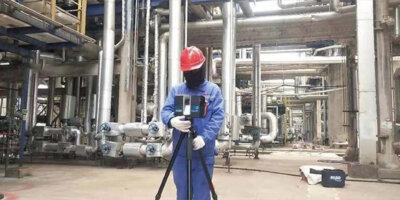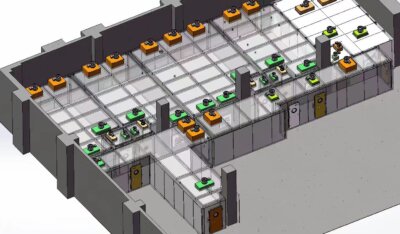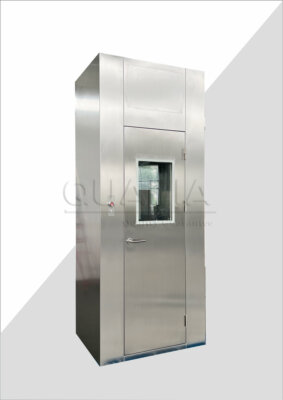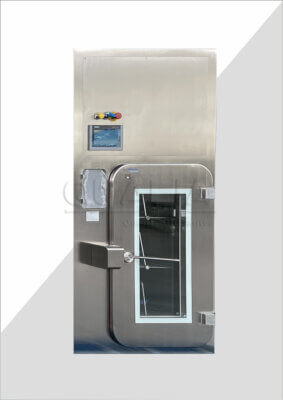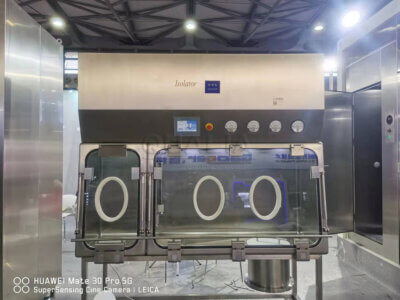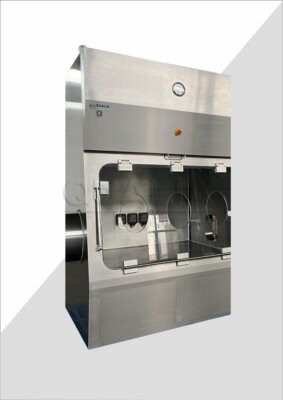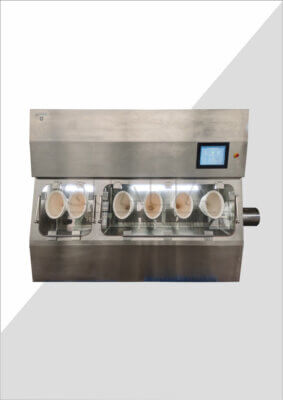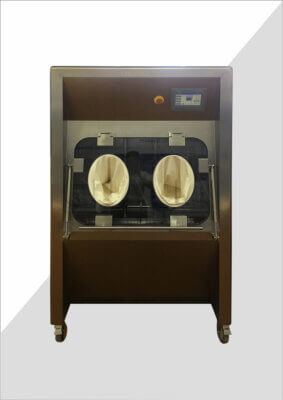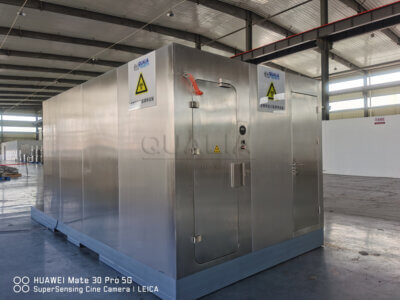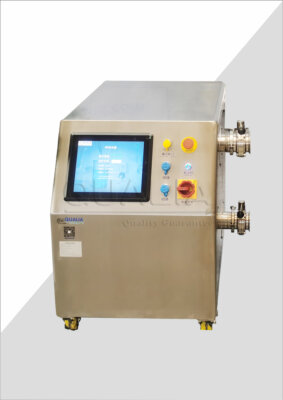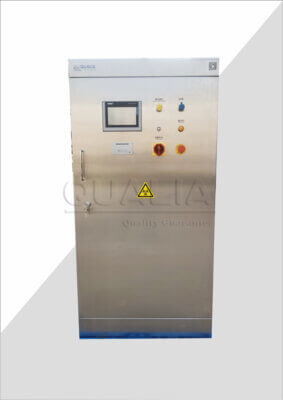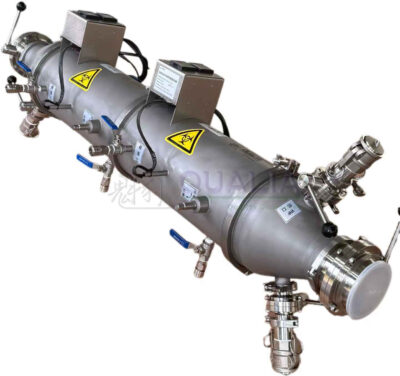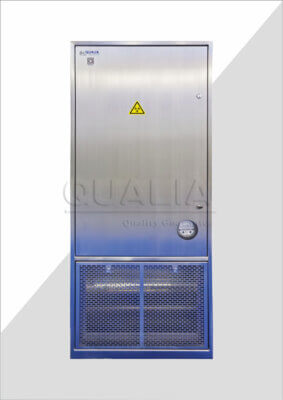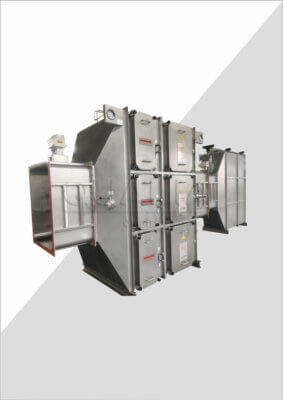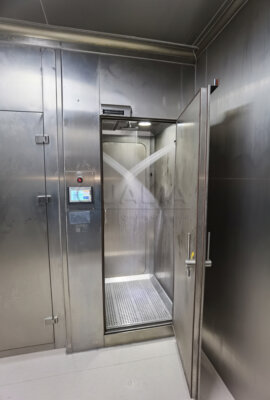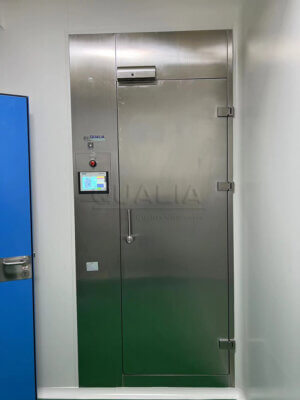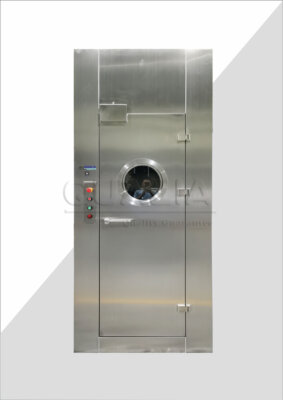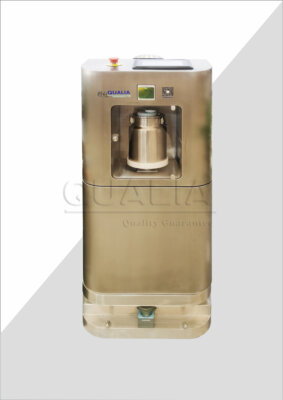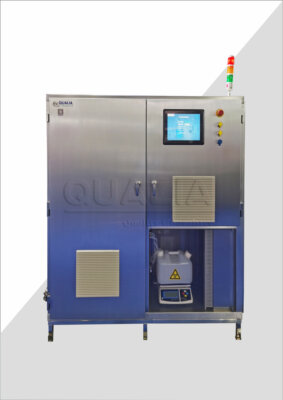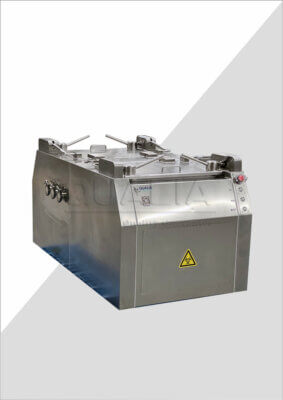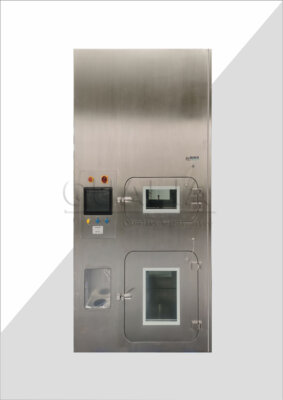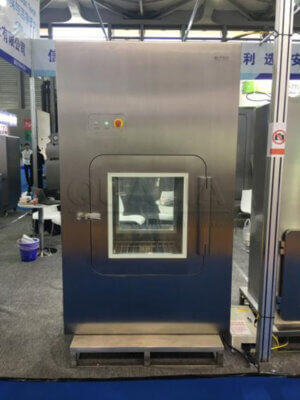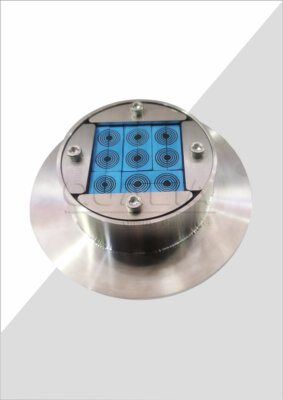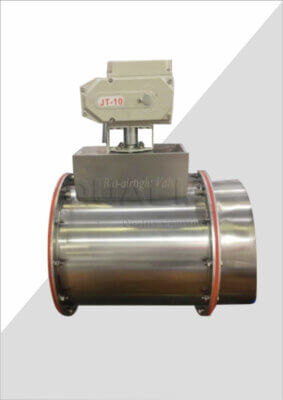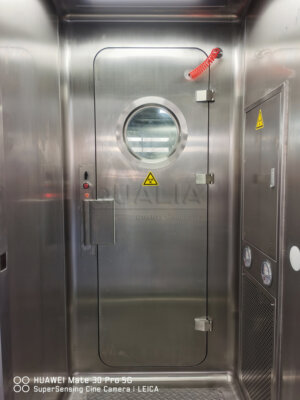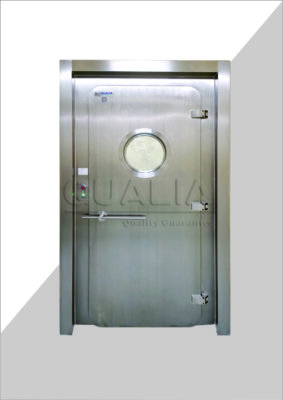Laboratory air showers are an essential component in maintaining the integrity of research environments, particularly in cleanrooms and other controlled spaces. These specialized devices play a crucial role in preventing contamination and ensuring the highest standards of cleanliness in various industries, including pharmaceuticals, biotechnology, and electronics manufacturing. As we delve into the world of laboratory air showers, we'll explore their functionality, benefits, and the critical role they play in preserving research integrity.
In this article, we'll examine the key features of laboratory air showers, their operational principles, and the industries that rely on them for maintaining sterile environments. We'll also discuss the latest advancements in air shower technology and how they contribute to improved research outcomes and product quality. By understanding the importance of these devices, researchers and facility managers can make informed decisions about implementing and maintaining air showers in their laboratories.
As we transition into the main content of this article, it's important to recognize that laboratory air showers are not just a luxury but a necessity in many research settings. They serve as the first line of defense against contaminants that could compromise experimental results or product quality. With this in mind, let's explore the various aspects of laboratory air showers and their impact on research integrity.
Laboratory air showers are critical components in maintaining cleanroom environments, effectively removing particulates from personnel and equipment before entering controlled spaces. These devices use high-volume, low-velocity HEPA-filtered air streams to dislodge contaminants, ensuring the highest standards of cleanliness and research integrity.
What Are Laboratory Air Showers and How Do They Work?
Laboratory air showers are specialized enclosures designed to remove particulates and contaminants from personnel and equipment before they enter cleanroom environments. These devices play a crucial role in maintaining the integrity of controlled spaces by preventing the introduction of unwanted particles that could compromise research or manufacturing processes.
At their core, laboratory air showers utilize high-volume, low-velocity HEPA-filtered air streams to dislodge and remove contaminants from surfaces. This process typically involves a person or equipment entering the air shower enclosure, where they are subjected to a carefully controlled stream of filtered air from multiple directions.
The operation of a laboratory air shower is based on a simple yet effective principle. As the user enters the enclosure, sensors detect their presence and activate the air shower cycle. High-pressure nozzles positioned strategically within the enclosure release jets of HEPA-filtered air, creating a turbulent environment that effectively dislodges particles from clothing, skin, and equipment surfaces. These particles are then captured by the air filtration system, preventing them from entering the cleanroom.
Laboratory air showers can remove up to 99.99% of particles 0.5 microns or larger, significantly reducing the risk of contamination in controlled environments.
| Air Shower Component | Function |
|---|---|
| HEPA Filters | Remove 99.99% of particles 0.5 microns or larger |
| High-Pressure Nozzles | Direct filtered air to dislodge contaminants |
| Air Filtration System | Captures and removes dislodged particles |
| Sensors | Detect user presence and activate air shower cycle |
In conclusion, laboratory air showers are sophisticated devices that utilize advanced filtration technology and carefully controlled airflow to maintain the cleanliness of controlled environments. By understanding their operation, researchers and facility managers can better appreciate the critical role these devices play in preserving research integrity and product quality.
Why Are Air Showers Essential for Research Integrity?
Research integrity is paramount in scientific endeavors, and maintaining a clean, controlled environment is crucial for achieving reliable and reproducible results. But why are air showers so essential in this context?
Air showers serve as a critical barrier between the outside world and the controlled environment of a cleanroom or laboratory. They effectively remove contaminants that could potentially compromise experiments, skew results, or contaminate sensitive materials. By providing a thorough cleaning process for personnel and equipment entering these controlled spaces, air showers significantly reduce the risk of introducing unwanted variables into research settings.
The importance of air showers in maintaining research integrity cannot be overstated. These devices not only remove visible particles but also capture microscopic contaminants that could interfere with sensitive experiments or manufacturing processes. In fields such as pharmaceutical research, semiconductor manufacturing, and biotechnology, even the smallest contamination can lead to significant errors or product failures.
Air showers can reduce particle counts by up to 95% in a single cycle, dramatically improving the cleanliness of personnel and equipment entering controlled environments and thereby enhancing research integrity.
| Research Field | Impact of Air Showers on Integrity |
|---|---|
| Pharmaceuticals | Prevent contamination of drug compounds |
| Biotechnology | Maintain sterility of cell cultures |
| Semiconductor | Ensure purity of microchip manufacturing |
| Nanotechnology | Preserve integrity of nanoscale experiments |
In conclusion, air showers play a vital role in maintaining research integrity by providing a crucial barrier against contamination. By effectively removing particles and contaminants from personnel and equipment, these devices help ensure that experiments and manufacturing processes occur in truly controlled environments, leading to more reliable and reproducible results.
What Industries Benefit Most from Laboratory Air Showers?
Laboratory air showers find applications across a wide range of industries where cleanliness and contamination control are paramount. But which sectors benefit the most from these specialized devices?
The pharmaceutical industry is perhaps one of the biggest beneficiaries of air shower technology. In drug manufacturing and research facilities, maintaining a sterile environment is crucial for ensuring the safety and efficacy of medications. Air showers help prevent contamination that could compromise drug purity or lead to inaccurate research results.
Similarly, the biotechnology sector relies heavily on air showers to maintain the integrity of their research environments. When working with sensitive biological materials, even the smallest contamination can lead to significant errors or false results. Air showers provide an essential layer of protection against these risks.
The semiconductor industry is another major user of air showers. In the production of microchips and other electronic components, even microscopic particles can cause defects that render products unusable. Air showers help maintain the ultra-clean environments necessary for successful semiconductor manufacturing.
In the semiconductor industry, the use of air showers has been shown to reduce defect rates by up to 30%, resulting in significant improvements in product yield and quality.
| Industry | Benefit of Air Showers |
|---|---|
| Pharmaceuticals | Ensure drug purity and research accuracy |
| Biotechnology | Maintain sterility of biological materials |
| Semiconductors | Reduce defect rates in microchip production |
| Aerospace | Protect sensitive equipment from contamination |
| Food Processing | Enhance food safety and quality control |
In conclusion, while laboratory air showers benefit a wide range of industries, they are particularly crucial in sectors where even minimal contamination can have significant consequences. From pharmaceuticals to semiconductors, these devices play a vital role in maintaining the high standards of cleanliness necessary for cutting-edge research and manufacturing processes.
How Do Air Showers Compare to Other Contamination Control Methods?
When it comes to maintaining clean environments, air showers are just one tool in the arsenal of contamination control methods. But how do they stack up against other techniques?
Air showers offer several advantages over traditional contamination control methods. Unlike simple gowning procedures or sticky mats, air showers provide active particle removal through high-velocity air streams. This dynamic approach is often more effective at dislodging and removing contaminants than passive methods.
Compared to chemical decontamination processes, air showers offer a non-toxic, residue-free alternative. This is particularly important in industries where chemical sensitivities could impact research outcomes or product quality. Additionally, air showers can be used repeatedly without the need for consumable materials, making them a more cost-effective long-term solution.
However, it's important to note that air showers are not a standalone solution. They work best as part of a comprehensive contamination control strategy that may include other methods such as proper gowning procedures, sticky mats, and regular cleaning protocols.
Studies have shown that combining air showers with other contamination control methods can reduce particle counts in cleanrooms by up to 99.9%, significantly outperforming any single method used in isolation.
| Control Method | Advantages | Disadvantages |
|---|---|---|
| Air Showers | Active particle removal, reusable | Initial cost, space requirements |
| Sticky Mats | Low cost, easy to implement | Passive removal, requires frequent replacement |
| Chemical Decontamination | Effective against biological contaminants | Chemical residues, potential sensitivities |
| HEPA Filtration | Continuous air cleaning | Does not address personnel contamination |
In conclusion, while air showers offer significant advantages in terms of active particle removal and long-term cost-effectiveness, they are most effective when used as part of a comprehensive contamination control strategy. By combining air showers with other methods, facilities can achieve the highest levels of cleanliness and maintain the integrity of their controlled environments.
What Are the Latest Advancements in Air Shower Technology?
The field of air shower technology is continuously evolving, with new innovations enhancing their effectiveness and efficiency. What are some of the latest advancements in this crucial area of contamination control?
One significant development is the integration of smart sensors and IoT (Internet of Things) capabilities into air shower systems. These advanced features allow for real-time monitoring of air quality, filter efficiency, and usage patterns. Facility managers can now receive alerts when maintenance is required or when contamination levels exceed preset thresholds, enabling proactive management of cleanroom environments.
Another area of innovation is in filter technology. The latest QUALIA air showers utilize advanced HEPA and ULPA filters that can capture particles as small as 0.12 microns with 99.9995% efficiency. These improvements in filtration technology provide an unprecedented level of contamination control, particularly crucial in industries dealing with nanoscale materials or ultra-sensitive research.
Energy efficiency has also been a focus of recent advancements. Modern air showers incorporate variable speed fans and intelligent power management systems that optimize energy consumption without compromising performance. This not only reduces operational costs but also aligns with the growing emphasis on sustainability in laboratory and manufacturing settings.
The latest air shower systems with IoT integration have been shown to reduce maintenance costs by up to 25% and improve overall system efficiency by 15%, leading to significant long-term savings for facilities.
| Advancement | Benefit |
|---|---|
| IoT Integration | Real-time monitoring and proactive maintenance |
| Advanced Filtration | Capture of ultra-fine particles (down to 0.12 microns) |
| Energy Efficiency | Reduced operational costs and environmental impact |
| Customizable Cycles | Tailored cleaning processes for specific industries |
| Antimicrobial Surfaces | Enhanced protection against biological contaminants |
In conclusion, the latest advancements in air shower technology are focused on improving efficiency, effectiveness, and user-friendliness. From smart sensors to advanced filtration and energy-efficient designs, these innovations are helping to set new standards in contamination control and research integrity.
How Do You Properly Maintain and Operate a Laboratory Air Shower?
Proper maintenance and operation of laboratory air showers are crucial for ensuring their effectiveness and longevity. But what are the key considerations for keeping these vital systems in top condition?
Regular maintenance is essential for the optimal performance of air showers. This typically includes routine filter inspections and replacements, cleaning of interior surfaces, and checking the functionality of all components such as sensors and air nozzles. It's recommended to establish a maintenance schedule based on usage frequency and the specific requirements of your facility.
Proper operation is equally important. Users should be trained on the correct procedures for entering and exiting the air shower, including the appropriate duration of the air shower cycle. It's crucial to ensure that all parts of the body and equipment are exposed to the air streams for effective cleaning.
Monitoring and documenting air shower performance is another key aspect of proper maintenance. This includes regular testing of air flow rates, particle counts, and filter efficiency. Many modern air showers, like the Laboratory air shower from QUALIA, include built-in monitoring systems that simplify this process.
Regular maintenance and proper operation of air showers can extend their lifespan by up to 50% and maintain optimal performance, ensuring consistent contamination control over time.
| Maintenance Task | Frequency | Importance |
|---|---|---|
| Filter Inspection | Monthly | Critical for air quality |
| Interior Cleaning | Weekly | Prevents build-up of contaminants |
| Air Flow Testing | Quarterly | Ensures optimal performance |
| User Training | Annually | Promotes correct usage |
| Full System Check | Annually | Identifies potential issues early |
In conclusion, proper maintenance and operation of laboratory air showers are essential for maintaining their effectiveness and ensuring the integrity of controlled environments. By following a regular maintenance schedule, providing thorough user training, and consistently monitoring performance, facilities can maximize the benefits of their air shower systems and maintain the highest standards of cleanliness.
What Are the Future Trends in Laboratory Air Shower Design and Usage?
As technology continues to advance and research requirements evolve, what can we expect to see in the future of laboratory air shower design and usage?
One emerging trend is the integration of artificial intelligence (AI) and machine learning into air shower systems. These technologies could enable predictive maintenance, automatically adjusting cleaning cycles based on detected contamination levels, and even personalizing air shower settings for individual users based on their typical contamination profiles.
Another area of development is in the materials used in air shower construction. Future designs may incorporate advanced antimicrobial materials that provide an additional layer of protection against biological contaminants. These materials could be particularly beneficial in pharmaceutical and biotechnology settings.
Sustainability is also likely to play a larger role in future air shower designs. We may see the development of more energy-efficient systems, the use of eco-friendly filter materials, and designs that minimize water usage in wet air shower systems.
Industry experts predict that AI-integrated air shower systems could improve contamination control efficiency by up to 40% while reducing energy consumption by 30%, representing a significant advancement in cleanroom technology.
| Future Trend | Potential Impact |
|---|---|
| AI Integration | Improved efficiency and personalized cleaning |
| Antimicrobial Materials | Enhanced protection against biological contaminants |
| Sustainable Designs | Reduced environmental impact and operational costs |
| Virtual Reality Training | Improved user compliance and education |
| Modular Systems | Greater flexibility for facility design and expansion |
In conclusion, the future of laboratory air showers looks set to be shaped by advancements in AI, materials science, and sustainable design. These innovations promise to enhance the effectiveness of contamination control, improve user experience, and align with broader trends towards sustainability in scientific research and manufacturing.
Conclusion
Laboratory air showers play a crucial role in maintaining the integrity of research environments and ensuring the quality of products in various industries. From pharmaceuticals to semiconductors, these specialized devices serve as a critical barrier against contamination, helping to preserve the cleanliness of controlled spaces and the accuracy of scientific experiments.
Throughout this article, we've explored the functionality of air showers, their importance in research integrity, and the industries that benefit most from their use. We've also discussed how air showers compare to other contamination control methods, the latest advancements in air shower technology, and the proper maintenance and operation of these systems.
Looking to the future, we can expect to see continued innovation in air shower design and functionality. From AI integration to sustainable materials, these advancements promise to further enhance the effectiveness and efficiency of contamination control in laboratory and manufacturing settings.
As research continues to push the boundaries of science and technology, the role of laboratory air showers in maintaining clean, controlled environments will only grow in importance. By understanding and implementing these crucial systems, researchers and facility managers can ensure the highest standards of cleanliness, protect the integrity of their work, and contribute to the advancement of their respective fields.
External Resources
- What is a Cleanroom Air Shower? | Laboratory-Supply.net – This article explains the function and importance of cleanroom air showers, including how they work, their benefits, and the industries that use them.
- Air Showers: Prevent Transmission of Airborne Contaminants | bioBUBBLE – This resource details the features and benefits of air showers, such as high-volume, low-velocity HEPA-filtered air streams, and their application in controlled environments.
- What Is an Air Shower? – Liberty Industries – This article describes how air showers operate, their positioning at cleanroom entrances and exits, and their role in preventing contamination in various industries.
- Cleanroom Air Showers | Esco Pharma – This page provides information on the technical aspects of cleanroom air showers, including the use of H14 filters, uniform lighting, and different modes of operation.
- Cleanroom Air Showers – Terra Universal – This resource offers details on the design, functionality, and applications of cleanroom air showers, emphasizing their role in maintaining cleanroom integrity.
- Air Showers for Cleanrooms – Clean Air Products – This site explains the purpose and operation of air showers in cleanroom settings, highlighting their importance in reducing particulate contamination.
- Cleanroom Air Shower Systems – NuAire – This page discusses the features and benefits of cleanroom air shower systems, including their use in pharmaceutical, biotechnology, and other controlled environments.
Related Contents:
- Air Showers with HEPA Filters: 99.97% Efficiency
- Modular Air Showers: Customizable Cleanliness
- Cleanroom Air Shower Booths: Complete Systems
- Personnel Air Showers: Employee Decontamination
- Air Shower Control Panels: Precision Management
- Air Showers for Semiconductor Cleanrooms
- Pass-Through Air Showers: Efficient Transitions
- Air Shower Types: Cleanroom Solutions for 2025
- Hospital Air Showers: Infection Control


